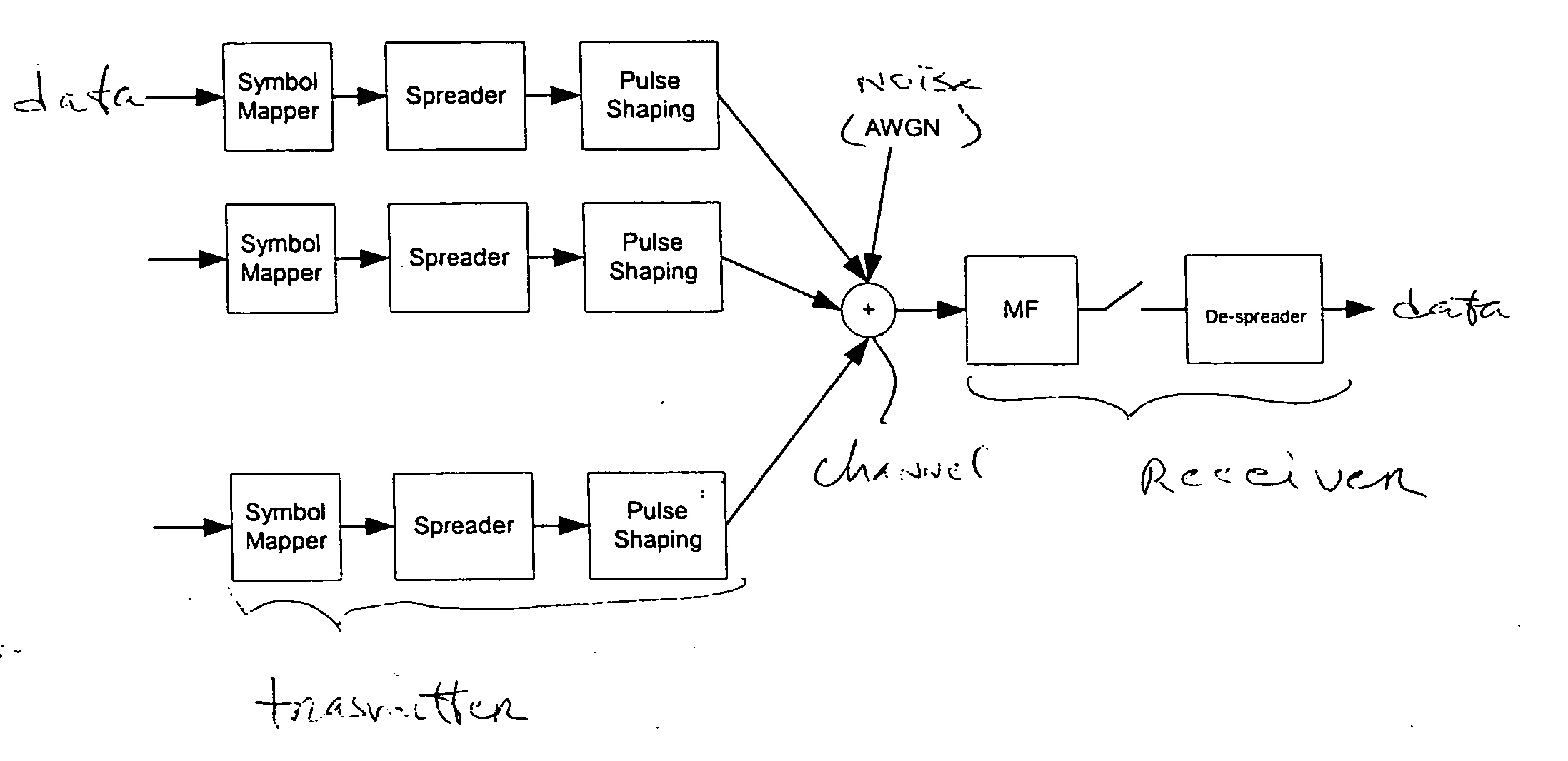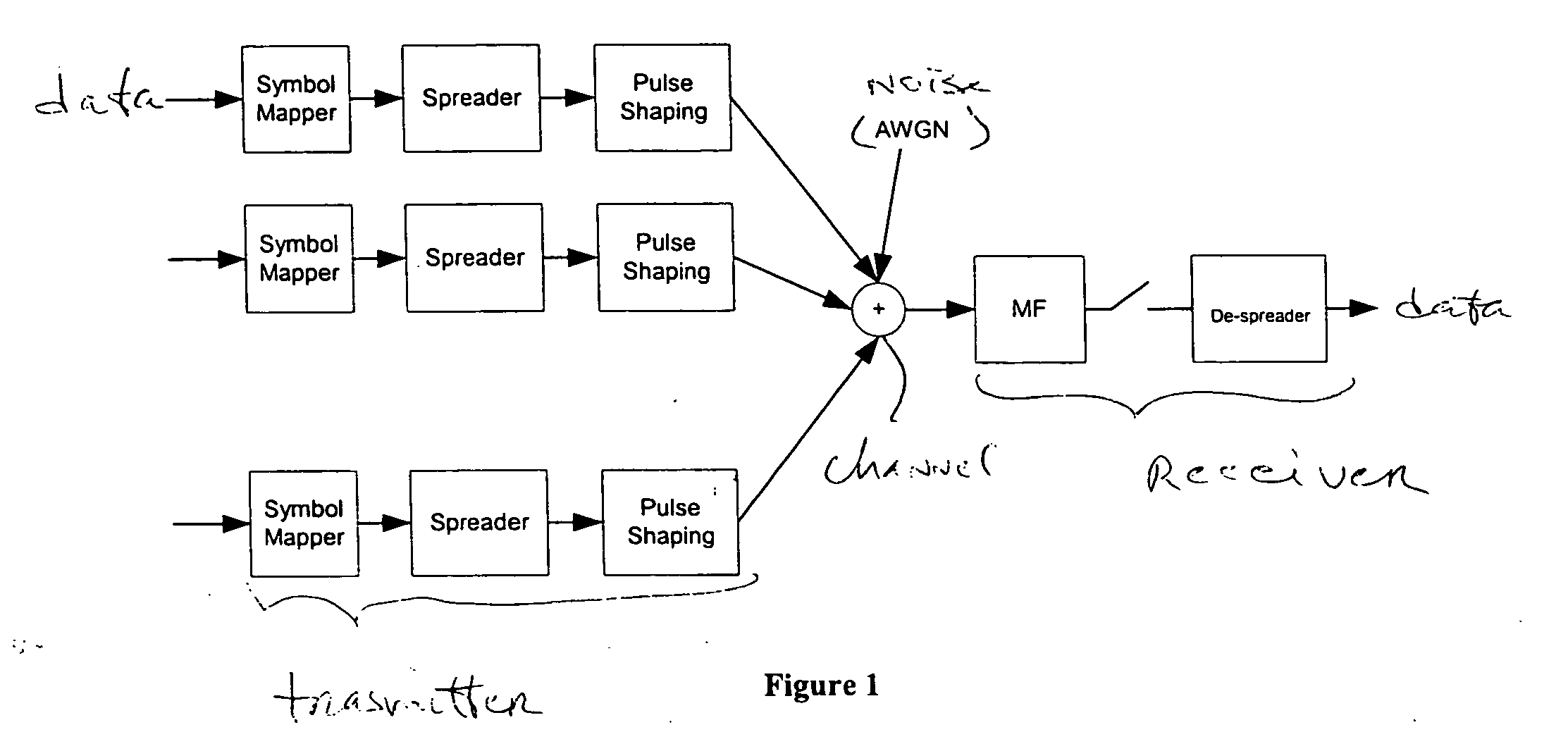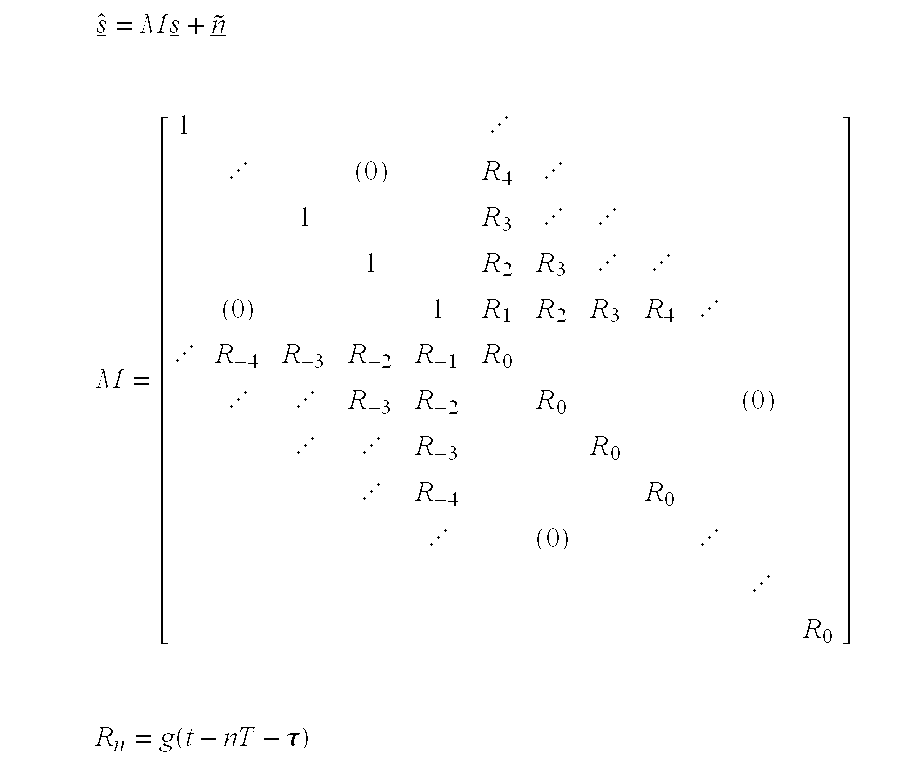Guard codes for S-CDMA systems
a technology of synchronous cdma and guard codes, applied in the field of common synchronous cdma (scdma) systems, can solve the problems of high cost and risk of s-cdma systems, and achieve the effects of reducing the interference due to timing errors, reducing the data throughput of the system, and relaxing the timing accuracy requirements
- Summary
- Abstract
- Description
- Claims
- Application Information
AI Technical Summary
Benefits of technology
Problems solved by technology
Method used
Image
Examples
Embodiment Construction
[0007] A common Synchronous-CDMA (S-CDMA) system is shown in FIG. 1. In this system N data symbols are transmitted at the same time from up to N different synchronized sources (each source can transmit one or more data symbols at a given time). Each of these symbols is multiplied by a different spreading code (consisting of N bits). The sequences of the spread symbols are summed (resulting in N “chips”):
p=sT·C
[0008] where s is the vector of the N transmitted symbols, C is the matrix of spreading codes (each row in C is a spreading code), and p is the sequence of then N transmitted chips.
[0009] The N spreading codes are orthogonal: C·CT=I.
[0010] In some S-CDMA systems there is one basic code C0 and all the other codes are generated by cyclically shifting the basic code: Ci[n]=C0[(n+i)mod N], n=0 . . . N−1
[0011] The invention is also applicable in cases where the spreading codes are not exactly shifted versions of the basic code, but are highly correlated with the shifted versions...
PUM
 Login to View More
Login to View More Abstract
Description
Claims
Application Information
 Login to View More
Login to View More - R&D
- Intellectual Property
- Life Sciences
- Materials
- Tech Scout
- Unparalleled Data Quality
- Higher Quality Content
- 60% Fewer Hallucinations
Browse by: Latest US Patents, China's latest patents, Technical Efficacy Thesaurus, Application Domain, Technology Topic, Popular Technical Reports.
© 2025 PatSnap. All rights reserved.Legal|Privacy policy|Modern Slavery Act Transparency Statement|Sitemap|About US| Contact US: help@patsnap.com



